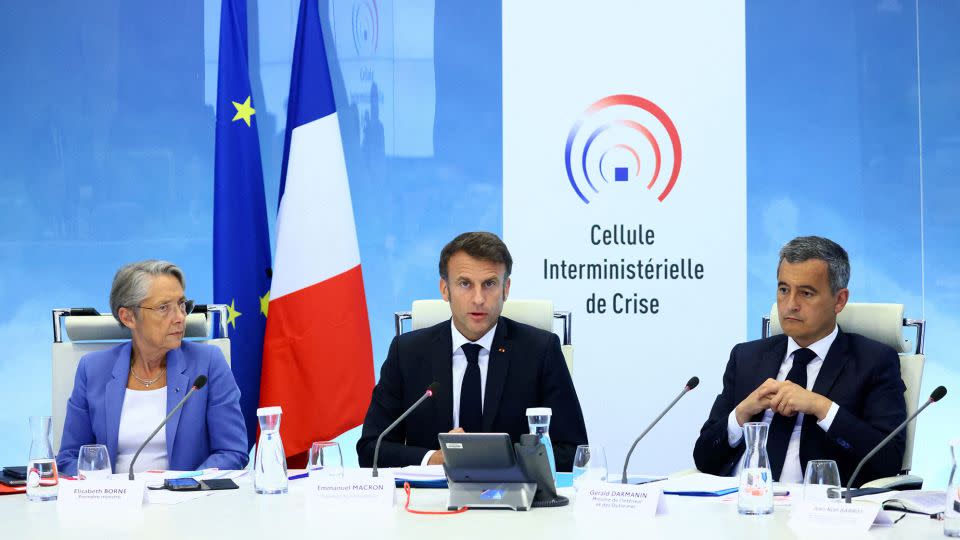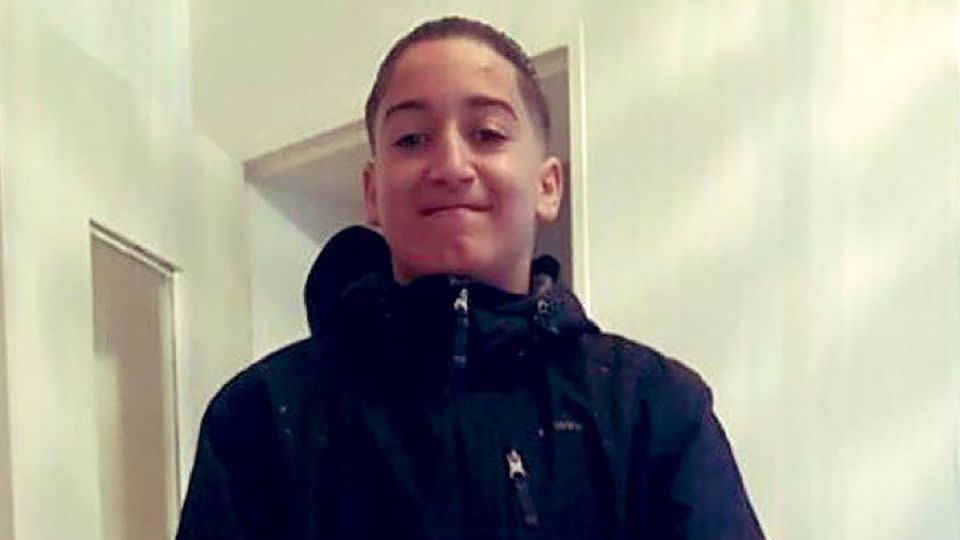Protests are sweeping France. Here’s what you need to know
France has been rocked by a wave of protests after a 17-year-old youth was shot by police near Paris on Tuesday, sparking a ban on demonstrations in some cities, travel warnings and reigniting a debate on over-policing in marginalized communities.
Scenes emerged of people setting fires to vehicles and climbing onto buildings with smashed windows, while riot police officers fiercely clashed with demonstrators.
The unrest prompted a crisis response from French President Emmanuel Macron, who held an emergency meeting with ministers as he attempts to bridge divisions and unite the country in his second term.
Here’s what we know.
What sparked the protests?
A police officer shot dead the teenager, Nahel, who was of Algerian heritage, during a traffic stop in the Paris suburb of Nanterre earlier this week.
Footage of the incident captured by a passerby showed two officers standing on the driver’s side of the car, one of whom discharged his gun at the driver despite not appearing to face any immediate threat.
The officer said he fired his gun because he was scared the boy would run someone over with the car, Nanterre prosecutor Pascal Prache said.
Prache said that it is believed the officer acted illegally in using his weapon. He is currently facing a formal investigation for voluntary homicide and has been placed in preliminary detention.
What’s happened since?
Protesters have been carrying signs that read “the police kill” and hundreds of government buildings have been damaged as Nahel’s death taps into anger over racial bias in the country.
Successive nights of violence across France and its overseas territories have in turn prompted French officials to launch a crackdown, with more than 40,000 police officers mobilized to patrol cities across the country. Since Tuesday, more than 2,000 people have been detained and more than 500 police officers and gendarmes have been injured, according to CNN calculations based on numbers released by the Interior Ministry.
In Paris alone, 5,000 security personnel were deployed. Officers were given powers to quell riots, make arrests, and “restore republican order,” French Interior Minister Gerard Darmanin said.
Overseas French territories have also witnessed violent protests. A man was killed by a “stray bullet” in Cayenne, capital of French Guiana, during riots on Thursday.
Police have also detained at least 28 people in riots in Réunion, a French territory in the Indian Ocean, according to authorities there.
What does this mean for Macron?
Macron gave himself 100 days to heal the country and reset his presidency after weeks of protests against unpopular pension reforms earlier this year. But hopes for a reset are now likely to be hampered by the widespread protests. It has not gone unnoticed that Macron attended an Elton John concert on Wednesday as cars burned and buildings were defaced across the country.
The French government is working to avoid a repeat of 2005, when the deaths of two teenage boys hiding from police set off a state of emergency amid three weeks of rioting.
Macron did cut short his attendance at a European Council summit in Brussels that had been due to last through Friday. He announced a ban on all “large-scale events” in France, including “celebratory events and numerous gatherings,” and urged parents to keep their children at home, saying many of those detained were young.

Macron has also called for social media platforms to help damp down the demonstrations, asking TikTok and Snapchat to withdraw the “most sensitive content” and to identify users who employ “social networks to call for disorder or to exacerbate violence.”
What led to the unrest?
Activists believe Nahel’s race was a factor in his killing, unraveling deep-rooted tensions over police discrimination against minoritized communities in France.
Secularism – known as “laïcité” in French – is a key foundation of French culture, as it seeks to uphold equality for all by erasing markers of difference, including race.
But many people of color in France say they are more likely to be victims of police brutality than White people. A 2017 study by the Rights Defenders, an independent human rights watchdog in France, found that young men perceived to be Black or Arab were 20 times more likely to be stopped by police than their peers.
Accusations of brutality have long plagued French police. The Council of Europe criticized “excessive use of force by state agents” in a statement earlier this year during protests against Macron’s unpopular pension reforms.
Rights groups, like Amnesty International, have accused French police of ethnic profiling and have recommended deep, systemic reform to address the discrimination.

The UN called on France to address “deep issues of racism and discrimination in law enforcement,” in the agency’s first comments since the killing.
In a statement on Friday, a spokesperson for the UN High Commissioner for Human Rights urged French authorities to “ensure use of force by police to address violent elements in demonstrations always respects the principles of legality, necessity, proportionality, non-discrimination, precaution and accountability.”
The French Ministry of Foreign Affairs later rebuffed the UN’s comments, saying: “France, and its police forces, fight with determination against racism and all forms of discrimination. There can be no doubt about this commitment.
“The use of force by the national police and gendarmerie is governed by the principles of absolute necessity and proportionality, strictly framed and controlled,” the ministry added.
Is it safe to travel to France?
As peak travel season gets underway, multiple countries issued warnings to those visiting France, where domestic transport networks have been disrupted.
The Interior Ministry announced that public transportation, including buses and tramways, would shut down across the country by 9 p.m. local time (3 p.m. ET), ahead of a fourth night of expected protests.
Limited curfews were imposed in Clamart and Neuilly-sur-Marne, while some bus services were disrupted in Paris but the Metro system was operating as normal. The Nanterre-Préfecture train station was closed.
In Lille, bus and tramway services were more or less running normally on Friday, with some diversions in place.
In the southern city of Marseille, public transport was due to stop services at 7 p.m.
There was no disruption to the Eurostar service connecting London, Lille and Paris as a result of the protests. French intercity trains are also not affected.
Further afield, the US State Department issued a security alert on June 29 covering France. It suggested monitoring media outlets France24, RFI and The Local for updates.
Meanwhile, Britain issued a travel advisory urging tourists to “monitor the media” and “avoid areas where riots are taking place.”
German authorities also advised its citizens to “find out about the current situation where you are staying at and avoid large-scale places of violent riots.”
CNN’s Dalal Mawad, Niamh Kennedy and Lindsay Isaac contributed reporting.
For more CNN news and newsletters create an account at CNN.com
